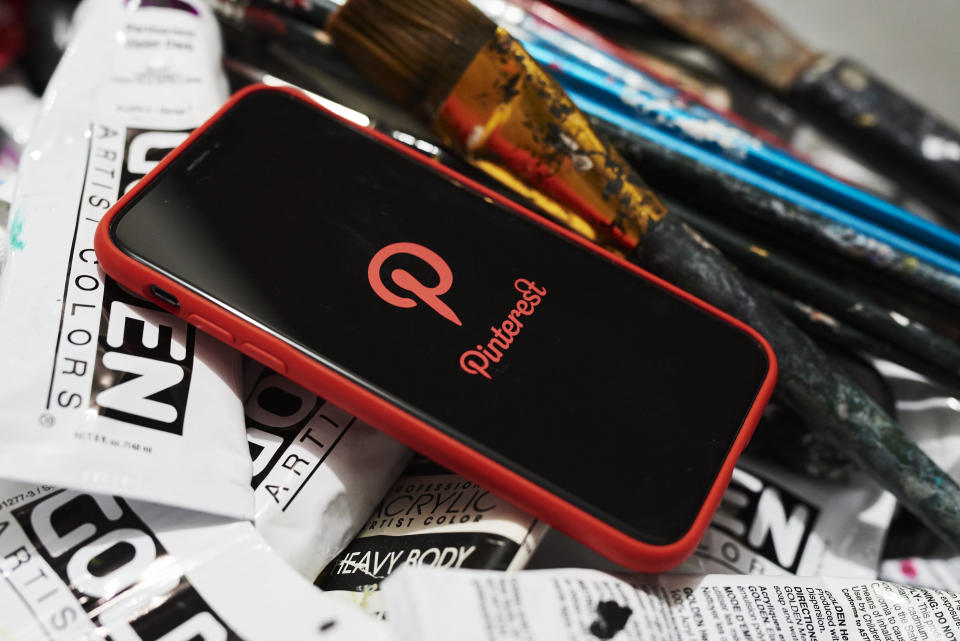Why Pinterest was smart to lower expectations before its IPO
Pinterest raised concerns when it revealed Monday it was pricing its IPO at a lower valuation than its latest round of public financing. But it may be a smart move for the digital scrapbooking company, some analysts say.
Pinterest set a price range of between $15 and $17 per share for its initial public offering in its amended S-1 form, filed on Monday. Pricing its shares as such gives Pinterest a valuation of nearly $11.3 billion — down 6% from the $12 billion valuation it had from raising $150 million in 2017. Such a “down round,” in which the company sells its stock at a price per share less than a previous round of financing, can be an indicator for investors that a company is in trouble or growth has slowed. But in Pinterest’s case, the down round is less a red flag and more a pragmatic course correction, according to Forge CEO Kelly Rodriques. That’s largely because the difference in valuation isn’t a huge amount.
“What they're saying to the market is, ‘hey, we didn't do as well as we thought we would, but we're still an incredibly valuable company,” explains Rodriques. “And, ‘oh, by the way, we don't want our IPO to be negatively affected for those who are in a six-month lockup period, by pricing the IPO too high.’ So I actually looked at this and went, ‘that's a smart move.’ I think it's actually quite prudent, particularly in light of the lockup period that the employees will be under, for the bankers and the executives to price it at this level.”

What’s a ‘significant’ down round?
A significant down round often yields a valuation 20% to 30% lower than the valuation of an earlier round round, Rodriques explains. In such a scenario, the company is essentially acknowledging it had a “monster miss” around revenues, user growth, or both.

“They tend to be demoralizing to founders, employees, and investors who had mentally anchored their holdings to the previous valuation and now must mentally mark them down,” adds Jake Jolis, a general partner at Matrix Partners.
With Pinterest, however, Rodriques contends the nine-year-old tech company’s financials aren’t a “monster miss.” To that end, Pinterest disclosed in its original S-1 filing that it generated revenues of almost $756 million in 2018 — up 60% year-over-year. It also nearly doubled the number of monthly active users from first-quarter 2016 to fourth-quarter 2018, ending the year with 265 million users.
And while Pinterest is still losing money — it generated a net loss of $63 million in 2018, down from a net loss of $130 million the year prior — the company is losing significantly less money than companies like Uber and Lyft (LYFT), the latter of which went public in late March. (Lyft lost $911 million in 2018, while Uber lost $842 million in fourth quarter 2018 alone.) Pinterest is one of seven remaining tech companies expected to IPO this year, alongside Airbnb, Instacart, Palantir, Pinterest, Postmates, Slack, and Uber.
At a loss
Pinterest’s actual 2018 revenues fall short of the $1 billion in revenues Pinterest was at one point on track to hitting, according to a CNBC report. But Rodriques points out the company’s revenues and user base are rising a good clip.
“Just take a look at the massive user growth these guys have had,” adds Rodriques. “What that translates into for me is ‘okay, so they weren't great at forecasting their revenue, but they still had a spectacular run.”
Pinterest isn’t the only notable tech company to have a “down round IPO.” When Square (SQ) debuted on Wall Street in November 2015, the payments business disappointed investors by pricing its IPO at $9 per-share, indicating a $2.9 billion valuation — 106% lower than the $6 billion valuation it fetched following a $150 million round of funding in October 2014. That was likely caused in part by concerns around competition then from Apple (AAPL) and Apple Pay, and troubling financials, which included mounting losses for the first nine months of 2015, as well as slowing revenue growth.
When Redwood City, California-based cloud company Box (BOX) went public in January 2015, it debuted at $14 per share with a valuation of nearly $1.7 billion — 35% lower than the company’s private market valuation of $2.4 billion — likely driven by weakening demand at the time for business-software stocks and skepticism around Box’s high sales and marketing costs, which at one point in 2013 surpassed its total revenues.
Jolis suggests a down round IPO isn’t necessarily the “end of the world.” Square stock, for instance, has long since recovered since its troubled down round IPO, closing trading this Monday at $75 per-share, and Box has also rebounded, closing trading on Monday at $20 a share. When Pinterest goes public, it too will have to prove its viability on Wall Street, but at least it has kept investors’ expectations in check.
More from JP:

